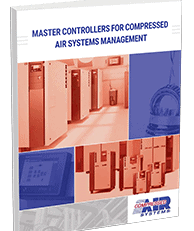Avoiding Moisture Content Issues in Compressed Air Systems
All types of compressed air systems contain some quantity of water vapor, putting solenoid valves, air motors, and entire systems at risk. If this air moisture is not carefully maintained, overall system efficiency can suffer greatly, affecting performance, production time, and the bottom line.
Compressed air systems of any variety operate best with the cleanest, driest air possible. So, to ensure that these systems work effectively, moisture must be closely monitored; unwanted moisture is inherently damaging to the processes at hand, and can be detrimental to the products being manufactured as well. If you’re noticing an obvious warning sign in the system, it’s probably too late; you’ll likely need to replace the essential parts in order to return operations to peak performance levels.
Common Warning Signs of Moisture Content Issues
While moisture is often considered an unavoidable problem in compressed air systems, measures can be taken to prevent it before it becomes a serious issue. Compressed air systems face a long list of risks as moisture increases, with compromised output and operational problems such as:
- Loss of lubrication, leading to increased wear and tear on moving parts and unnecessary system strain
- The creation and buildup of rust, corrosion, and other damaging contaminants
- Scaling and orifice clogging that can lead to operational failure in pneumatic controls
- Failing parts, which can cause an immediate risk of shutdown, production losses, and unnecessary downtime
- Frozen control lines and cold-weather malfunctions
- Unexpected air leaks, which can result in loss of pressure and capacity while creating an opportunity for additional moisture and contaminants to infiltrate the system
- Bacterial growth, which can compromise the quality of compressed air systems used in the food and medical sectors, disrupting production and making products unfit for use
- Leaking water from open valves or sticking valves, requiring part replacement
Effective Maintenance Measures for Combatting Moisture Problems

No facility wants to get caught up in a cycle of constant moisture-related part replacement. A few simple maintenance measures can make all the difference for the health of your compressed air system. Access to clean, dry compressed air will always be a major asset to operations, allowing for enhanced performance and lower operating costs while ensuring minimal part damage.
Below are some key maintenance tips to keep in mind to ensure optimal system performance and reliability.
- Plant managers can implement dew point monitors as an early identifier of moisture problems.
- Teams can work to design consistent, effective maintenance and review schedules, eliminating the need for heavy spending on major part replacement.
- Specialty equipment can prepare managers for effective system maintenance; air dryers, inline filters, and drain systems are all excellent tools for avoiding and managing moisture buildup.
- Adding a valve to dry air tanks makes daily moisture monitoring simple and straightforward; plant managers can check regularly to ensure operations are running properly. And if the drain in the dry air tank comes on, staff will be alerted immediately that there is an issue.
- Master controllers allow for thorough system monitoring by tracking system temperatures, dew point, and flow for essential health and preventative maintenance needs.
- Inline air filters provide key protection for compressed air systems; routine filter checks and replacements ensure that extra moisture and system contaminants can be easily removed.
Working With Compressed Air Systems, Inc.
The team of compressed air technicians at Compressed Air Systems (CAS) works closely with all of our clients to ensure that they find the ideal moisture management solution for their unique application. We’ll work to identify the right type of air dryer for your system based on performance goals, specific uses, and particular environment and operating conditions.
And our walkthrough service, free for Florida customers, features on-site testing and system sampling to help

ensure the best fit. We can also work with you to map maintenance needs, creating a personalized set of review checklists andschedules to protect your system and guarantee peak performance.
To learn more about moisture management and compressed air system optimization, download our Guide to Moisture Content in Compressed Air, or contact our specialists today.









